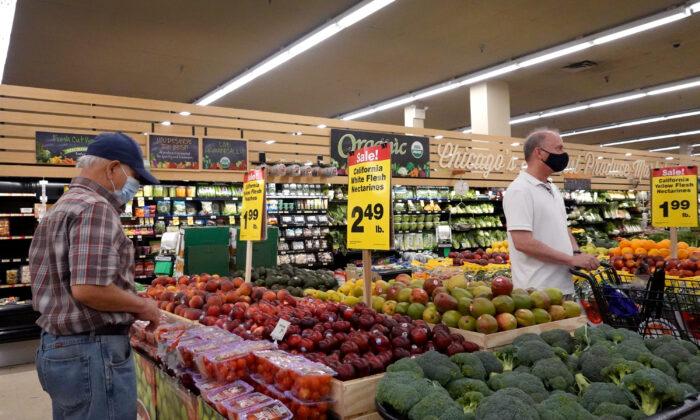Consumer prices rose by more than expected in September as food and energy costs surged, new government data show.
On a month-over-month basis, the consumer price index (CPI) rose by 0.4 percent, slightly higher than the market forecast of 0.3 percent.
The core inflation rate, which eliminates the volatile food and energy sectors, surged by 4 percent, matching economists’ expectations. This was unchanged from August.
Energy prices soared by 24.8 percent over the past 12 months, with all the major energy component indexes spiking on an annualized basis. Gasoline increased by 42.1 percent, natural gas advanced by 20.6 percent, and the index for electricity rose by 5.2 percent.
Food has been one of the other primary drivers of rising prices, soaring to its highest level since December 2011. The food at home index increased by 4.5 percent, buoyed by all six major grocery store food group indexes, particularly for meats, eggs, fish, and poultry. Food away from home also surged 4.7 percent.

The monthly U.S. government snapshot of the cost of living found that shelter costs rose by 3.2 percent in the 12 months ending in September. The Economics Research team at Goldman Sachs stated in a research note that the report identified “the fastest pace of inflation for rent and owners’ equivalent rent since the 2006 housing bubble.”
Morgan Stanley agreed, also writing in a research note that this “was the key story in the September CPI report and that should provide an important source of support that is likely to keep the inflation data sequentially firm in the months ahead.”
New vehicles and used automobiles and trucks soared by 8.7 percent and 24.4 percent year-over-year, respectively. Although transportation services eased by 0.5 percent month-over-month, this category recorded an annual gain of 4.4 percent.
Apparel fell by 1.1 percent in September, but prices have risen consistently over the past year, showing a year-over-year increase of 3.4 percent.
Is Inflation Still Transitory?
The Federal Reserve and the White House have stated that inflation is transitory, despite federal officials conceding that current pressures could persist into 2022.Bostic, a voting member of the interest-rate setting Federal Open Market Committee in 2021, acknowledged that he would be “watching carefully” to ensure inflation doesn’t spiral out of control.
St. Louis Fed President James Bullard thinks inflation could run as high as 2.8 percent in 2022. This is higher than the Fed’s broader outlook of 2.3 percent.
Will the Federal Reserve Raise Rates Sooner?
The U.S. central bank has signaled that it plans to trim its $120-billion-per-month quantitative easing program as early as November. But what about interest rates?Because of the slower reversal of inflation, IHS Markit altered its forecast for Fed monetary policy actions. The information provider believes that the Fed will raise rates in March 2023 and end asset purchases in June 2022.
“Prompted by recent developments, of which the most important was a revised outlook for inflation that includes a more gradual reversal of the current spike of inflation and correspondingly increased risk that long-run inflation expectations might rise above the Fed’s longer-run 2 [percent] target, IHS Markit has updated our monetary policy outlook. We now expect the Fed to begin increasing interest rates and end bond purchases earlier. Additionally, we expect the Fed will return to an approximately neutral stance of interest-rate policy faster, albeit still gradually,” Ken Matheny, executive director of U.S. economics for IHS Markit, wrote in a note.





